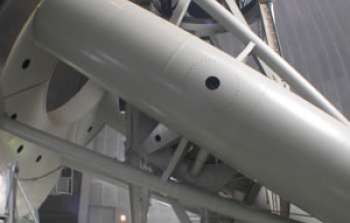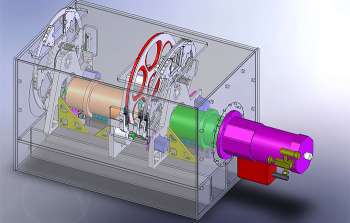sci09003 — Announcement
ReSTAR Update: NSF Commits New Funds for ReSTAR
July 31, 2009
NOAO has begun to implement the recommendations of the study on Renewing Small Telescopes for Astronomical Research (ReSTAR) through new funds allocated by the NSF. ReSTAR provided a compelling case for modernizing the capabilities on 2- to 5-m telescopes and increased access to these facilities.
In response to our ReSTAR proposal (see the December 2008 issue of Currents), the NSF has committed an initial $3M that will be used to improve community access to spectroscopic capabilities on 2- to 5-m telescopes. Following the prioritization given by ReSTAR, the NSF funds will be used to provide immediate access to the Palomar 200-inch telescope (which offers optical and near-infrared spectroscopic capabilities) and to build a copy of the OSMOS optical spectrograph for the Mayall 4-m telescope on Kitt Peak. In addition, NOAO will begin a program to upgrade key optical detector and controller systems at CTIO and KPNO.
Palomar 200-inch Access: NOAO has now secured 23 nights per year on the Palomar 200-inch for an initial period of 3 years, through an agreement with Caltech Optical Observatories and at a cost of approximately $0.9M. The Palomar time was our highest priority, because it offers immediate access to spectroscopic capability in the optical (Double Spectrograph) and near-infrared (TripleSpec). Proposals for the Double Spectrograph and TripleSpec are likely to be accepted for the 2010A semester through the standard NOAO proposal process. Interested proposers are requested to consult the NOAO web pages for the latest on the status of this opportunity. The proposal deadline is 30 September 2009.
OSMOS: A longer term priority is to modernize the spectroscopic capabilities on the NOAO 4-m telescopes. These facilities offer the largest number of open access nights among 2- to 5-m aperture telescopes in the US System. Approximately $1.5M of the ReSTAR funding will be used to build a copy of the Ohio State Multi-Object Spectrograph (OSMOS; PI Dr. Paul Martini) for initial deployment at the Mayall. OSMOS is a versatile optical imaging spectrograph with high throughput VPH gratings, spectral resolution up to R=5000, and a 10 arcminute field of view. The expected throughput is more than twice that of capabilities currently available at NOAO 4-m telescopes. Ohio State and NOAO will modify the optical design, Ohio State will handle the detailed mechanical design and integration, and NOAO will provide a detector and controller package. While NOAO can currently commit to building only one copy of OSMOS, a second copy is possible if additional resources can be identified.
Infrastructure Upgrades: The remainder of the NSF award will be used to begin upgrading the detector and controller systems at CTIO and KPNO in order to enhance reliability and reduce readout times. Gains in sensitivity are expected as well. The highest priority systems for upgrade are the Mosaic-1 8Kx8K imager at KPNO and the Hydra multi-object fiber spectrograph at CTIO. The current intent is for Mosaic to receive new 4Kx4K CCDs and the new controller, Torrent, which has been developed at NOAO. Hydra would receive a new 2Kx4K CCD and a Torrent controller as well.
NOAO will continue to work with the NSF to secure funding for the outstanding portions of the ReSTAR proposal in the coming years (no commitment has yet been made). These funds would be used, for example, to offer longer-term access to Palomar or other System facilities, to build additional instruments (e.g., a copy of TripleSpec for the Blanco telescope), and to improve telescope-related infrastructure (e.g., wavefront sensors and guiders). NOAO is committed to pursuing these projects under the ReSTAR initiative, and in partnership with the NSF, will continue to plan for these developments as one of its highest priority missions.
About the Announcement
| Id: |
ID
sci09003
|



